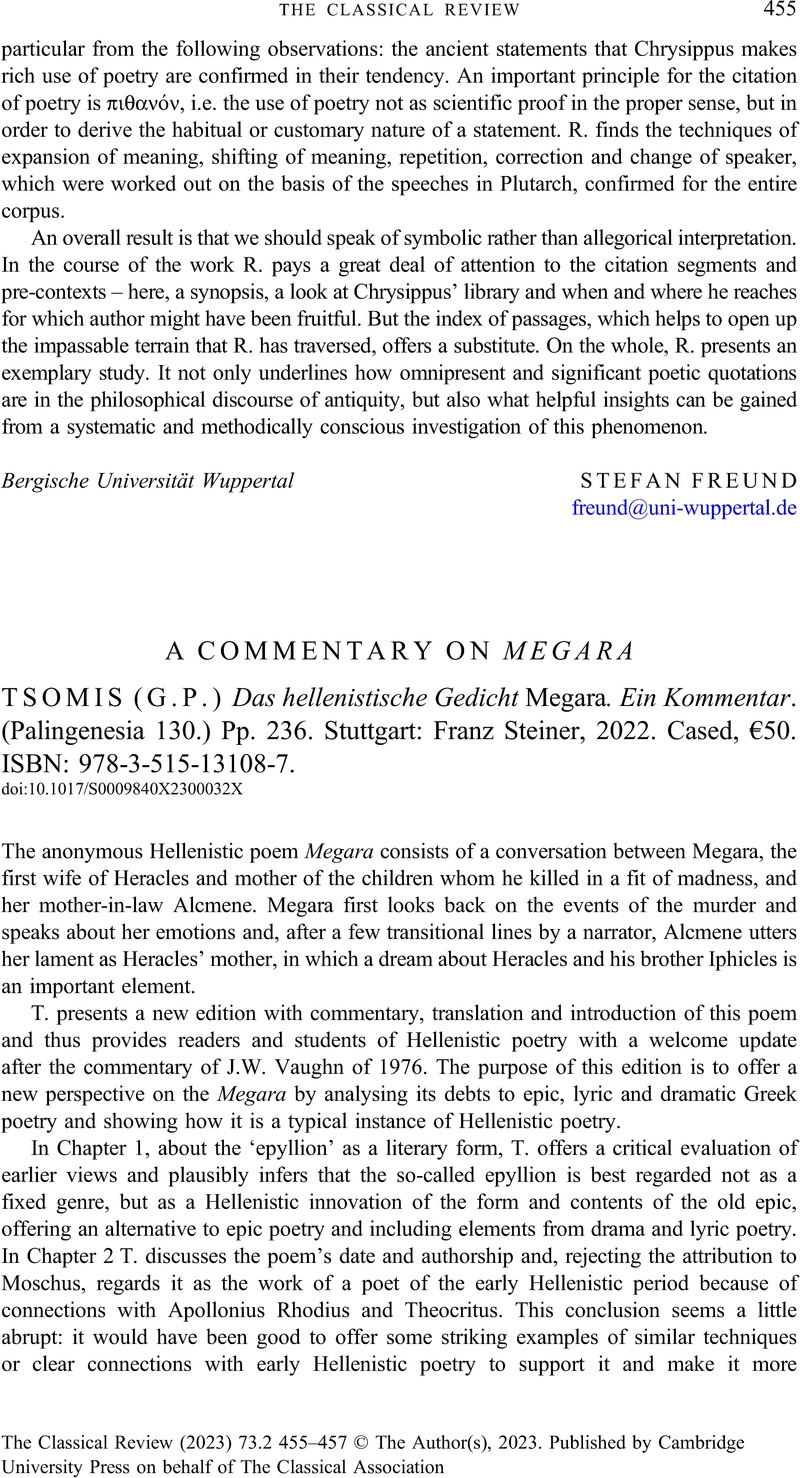No CrossRef data available.
Article contents
A COMMENTARY ON MEGARA - (G.P.) TSOMIS Das hellenistische Gedicht Megara. Ein Kommentar. (Palingenesia 130.) Pp. 236. Stuttgart: Franz Steiner, 2022. Cased, €50. ISBN: 978-3-515-13108-7.
Review products
(G.P.) TSOMIS Das hellenistische Gedicht Megara. Ein Kommentar. (Palingenesia 130.) Pp. 236. Stuttgart: Franz Steiner, 2022. Cased, €50. ISBN: 978-3-515-13108-7.
Published online by Cambridge University Press: 20 April 2023
Abstract
An abstract is not available for this content so a preview has been provided. Please use the Get access link above for information on how to access this content.

- Type
- Reviews
- Information
- Copyright
- Copyright © The Author(s), 2023. Published by Cambridge University Press on behalf of The Classical Association



